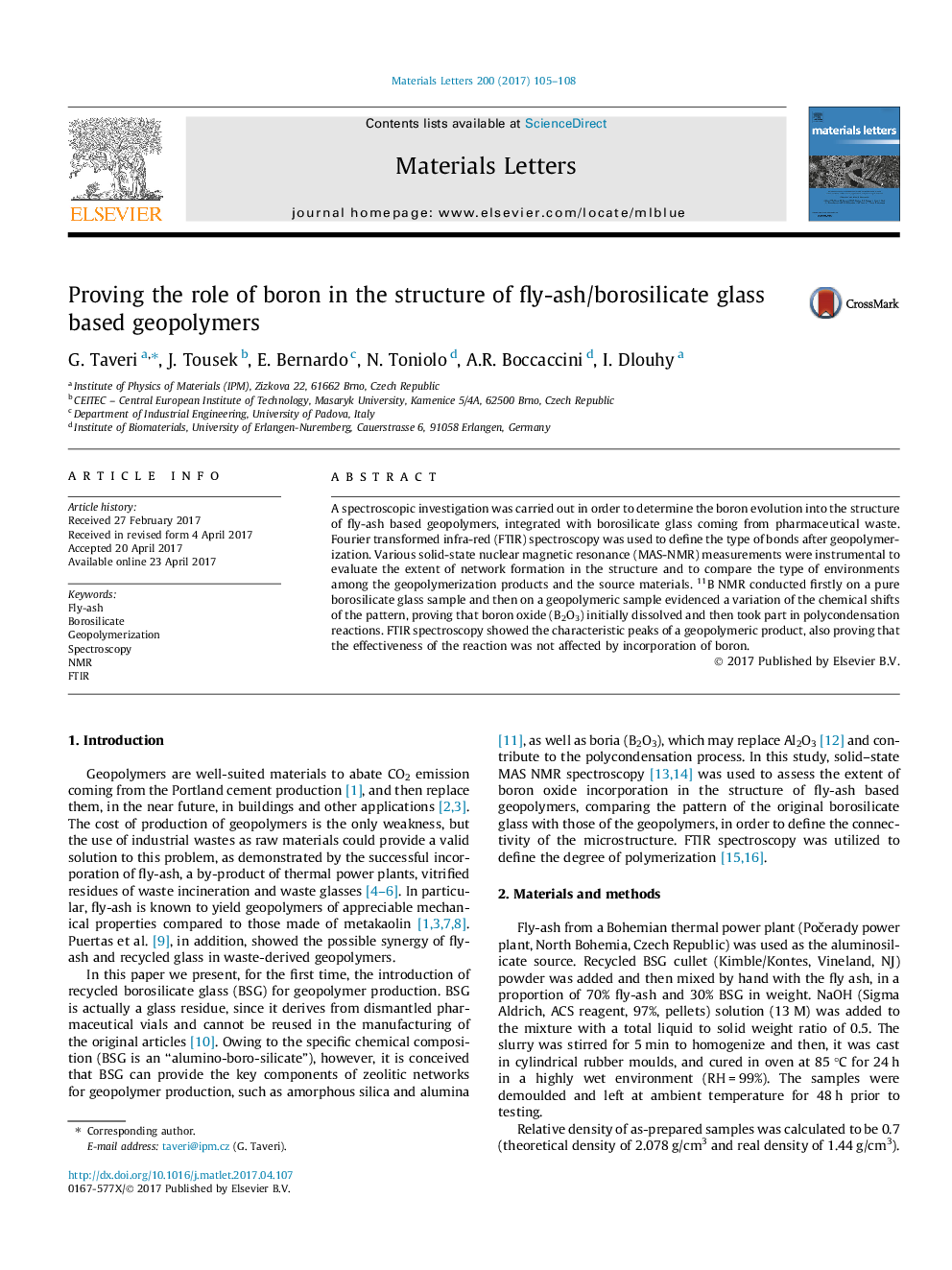| Article ID | Journal | Published Year | Pages | File Type |
|---|---|---|---|---|
| 5462847 | Materials Letters | 2017 | 4 Pages |
Abstract
A spectroscopic investigation was carried out in order to determine the boron evolution into the structure of fly-ash based geopolymers, integrated with borosilicate glass coming from pharmaceutical waste. Fourier transformed infra-red (FTIR) spectroscopy was used to define the type of bonds after geopolymerization. Various solid-state nuclear magnetic resonance (MAS-NMR) measurements were instrumental to evaluate the extent of network formation in the structure and to compare the type of environments among the geopolymerization products and the source materials. 11B NMR conducted firstly on a pure borosilicate glass sample and then on a geopolymeric sample evidenced a variation of the chemical shifts of the pattern, proving that boron oxide (B2O3) initially dissolved and then took part in polycondensation reactions. FTIR spectroscopy showed the characteristic peaks of a geopolymeric product, also proving that the effectiveness of the reaction was not affected by incorporation of boron.
Related Topics
Physical Sciences and Engineering
Materials Science
Nanotechnology
Authors
G. Taveri, J. Tousek, E. Bernardo, N. Toniolo, A.R. Boccaccini, I. Dlouhy,
